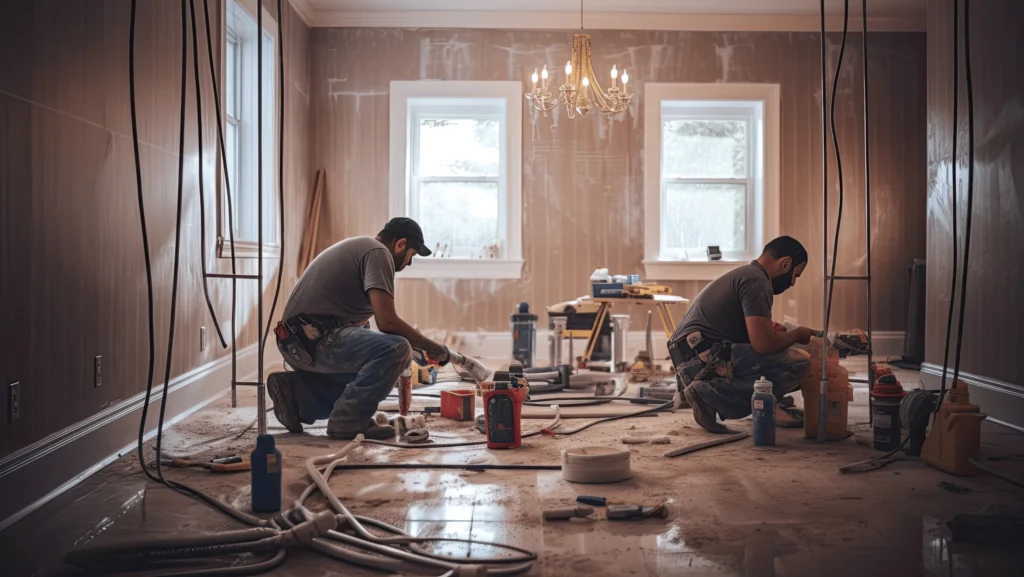Owning a home comes with the responsibility of regular maintenance and occasional repairs. While many homeowners prioritize renovations and upgrades, it’s crucial to also set aside a budget specifically for the upkeep of your home. Proper budgeting for home maintenance and repairs helps ensure that unexpected costs don’t derail your finances and that your property remains in good condition.
Understand the Costs Involved
The first step in budgeting for home maintenance is understanding the types of costs that are involved. Home maintenance includes everything from seasonal tasks like cleaning gutters, servicing the HVAC system, and checking the roof, to unexpected repairs like plumbing issues, electrical faults, or appliance breakdowns. It’s important to have a clear understanding of what needs to be done on an annual basis and what repairs might arise. Keep in mind that the age of your home, the climate in your area, and the materials used can influence the cost of maintenance and repairs.
Calculate the 1% Rule
A common rule of thumb for home maintenance budgeting is the 1% rule, which suggests setting aside 1% of your home’s purchase price each year for maintenance. For instance, if your home is valued at $300,000, you should budget around $3,000 per year for maintenance and repairs. While this is a good starting point, remember that some years may require more significant repairs, while others might require less.
Create a Home Maintenance Schedule
A proactive approach to home maintenance can save you money in the long run by preventing major issues before they occur. Developing a maintenance schedule helps you stay on top of regular tasks like inspecting your roof, cleaning air ducts, and servicing appliances. You can also plan for larger tasks that need attention every few years, such as painting the exterior, replacing the water heater, or resealing windows. Having a clear schedule allows you to allocate funds throughout the year for different tasks, avoiding the need to dip into emergency savings.
Set Up an Emergency Fund for Unexpected Repairs
Even with the best planning, unexpected repairs can arise. From storm damage to plumbing disasters, these unanticipated issues can put a strain on your finances. To avoid financial stress, it’s a good idea to set up an emergency fund for such repairs. Ideally, your emergency fund should cover at least 3-6 months of living expenses, including potential repairs. Having this cushion ensures that you can address repairs without having to rely on credit cards or loans.
Monitor and Adjust Your Budget Over Time
Home maintenance needs evolve over time, especially as your property ages. For example, a newer home might require fewer repairs than an older home, but as your home ages, maintenance and repair costs are likely to increase. It’s important to regularly review your budget and adjust it as needed. If you experience unexpected repairs, consider increasing your maintenance budget for the next year to account for future costs.
Factor in DIY vs. Professional Help
When planning your home maintenance budget, consider the tasks you can handle yourself and those that require professional assistance. Many homeowners can save money by taking care of smaller tasks, such as lawn care, cleaning the gutters, or painting the interior. However, more complex tasks like electrical work, plumbing repairs, or major appliance fixes should be left to professionals to avoid the risk of further damage. Balancing DIY tasks with professional help can help you keep costs manageable while ensuring your home stays in top condition.
Plan for Long-Term Upgrades
In addition to regular maintenance, it’s wise to budget for long-term upgrades. Over time, certain components of your home will need to be replaced, such as flooring, roofing, or appliances. By setting aside money for these larger expenses, you can avoid the shock of paying for major upgrades all at once. Planning for long-term improvements also allows you to make informed decisions about the best time to make updates and whether they align with your overall financial goals.
Include Seasonal Maintenance Costs
Seasonal changes bring different maintenance needs, and budgeting for these tasks is essential. For instance, winter may require you to check your heating system, insulate pipes, and clean chimneys, while summer might involve lawn care, exterior painting, or cooling system maintenance. Factor in the costs of seasonal maintenance when creating your budget to ensure that you’re not caught off guard during specific times of the year.
Use Technology to Track Expenses
With the advancement of technology, tracking your home maintenance and repair expenses has never been easier. There are various apps and software tools available that can help you organize your tasks, set reminders for maintenance, and track the costs associated with each job. These tools allow you to keep a running record of repairs, making it easier to forecast future costs and make adjustments to your budget.
Conclusion
Budgeting for home maintenance and repairs is an essential part of homeownership. By understanding the costs involved, creating a schedule, and setting aside emergency funds, you can ensure your home stays in good shape without causing financial strain. Regularly reviewing and adjusting your budget will help you stay ahead of necessary repairs and long-term upgrades, making it easier to maintain your home’s value and comfort. With proper planning and smart budgeting, homeownership can be a rewarding and stress-free experience.




